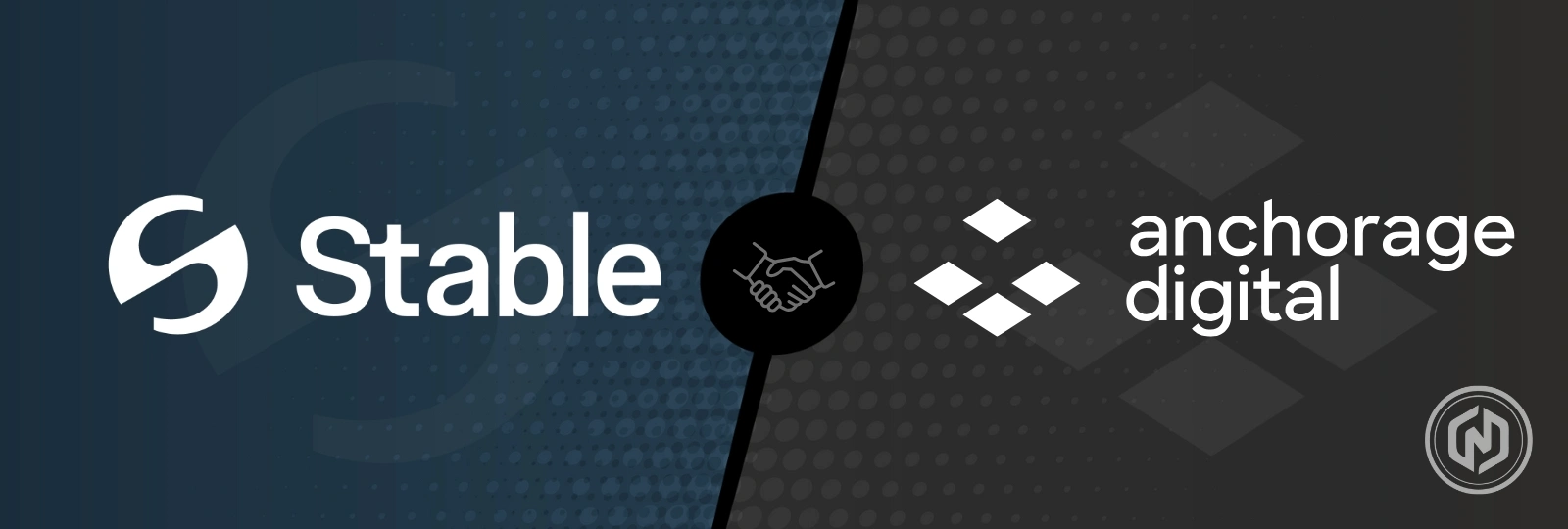Key Highlights
- Anchorage Digital, a federally chartered bank, was named as the preferred custodian for the Stable mainnet launch
- The platform will enable enterprise-level stablecoin issuance on a purpose-built blockchain following new U.S. regulations
- Kyrgyzstan launched the world’s first government-issued, gold-backed stablecoins, the USDKG
On November 13, Anchorage Digital was chosen as the preferred custodian for the mainnet launch of Stable. A mainnet is the fully operational version of a blockchain, and Stable is a new blockchain built specifically for issuing stablecoins and running decentralized finance applications.
This partnership means Anchorage will provide top-tier security and compliance services for this major launch.
“Our mission is to support protocols from their earliest stages and enable them to scale securely with institutional-grade infrastructure. Stable represents a new chapter for stablecoin-native networks, and we’re proud to be a day-one partner as it works towards mainnet,” stated Nathan McCauley, Co-Founder and CEO of Anchorage Digital.
“We’re excited to deepen our partnership with Anchorage Digital, a trusted institutional custodian that has been with us since the beginning. Their regulatory expertise and robust technical strength create a solid foundation to prepare for our mainnet launch. Together, we’re not just advancing a more secure and scalable stablecoin ecosystem; we’re setting the standard for the future of on-chain institutional-grade financial infrastructure, ” said Brian Mehler, CEO of Stable.
Stable was created to solve common problems in the stablecoin space, such as high transaction fees and complicated regulations. Its technology allows for the creation of stablecoins that can comply with new laws in both Europe and the United States.
Kyrgyzstan Makes History with Gold-Backed Digital Currency
Kyrgyzstan, the Central Asian country, has launched a national stablecoin called the USDKG. What makes this launch unique is that it is the world’s first government-issued stablecoin to be backed by gold reserves. The government has created over 50 million tokens, each pegged to the value of one U.S. dollar and supported by gold held in state vaults.
The government, advised by Binance co-founder Changpeng Zhao, is taking this initiative to strengthen its economy by integrating blockchain-based innovations. The main purpose behind this initiative is to make cross-border transactions easier and to reduce the high cost of remittances, which are money transfers sent home by citizens working abroad. These remittances make up nearly a third of the country’s economy.
Institutional Adoption of Stablecoin Grows with Every Passing Day
In 2025, the stablecoin market witnessed an impressive growth, thanks to regulatory developments around the world. Major financial institutions and payment giants are now integrating stablecoins into their main operations at an abnormal rate.
The total value of all stablecoins in circulation has grown dramatically, and the monthly volume of transactions has reached trillions of dollars. This activity is increasingly for real-world uses like payments and settlements, not just for trading other cryptocurrencies.
Visa and Mastercard are now supporting stablecoin transactions on their networks, which process trillions of dollars in value. PayPal has its own stablecoin that already handles a portion of its enormous payment volume. Traditional banks like JPMorgan and BNY Mellon are also actively developing their own digital tokens or partnering with existing stablecoin companies.
In Europe and Asia, groups of major banks are preparing to launch their own euro and Hong Kong dollar-pegged stablecoins. A recent survey of financial institutions finds that nearly half are already using stablecoins, while many more are testing them.



